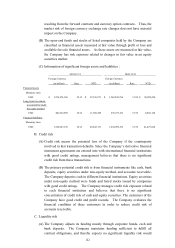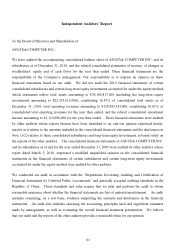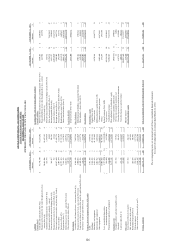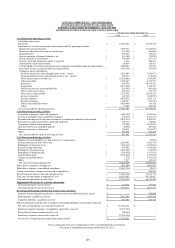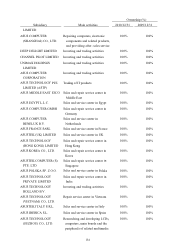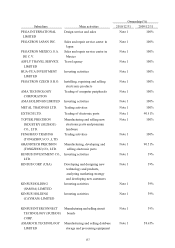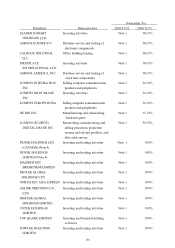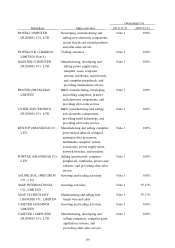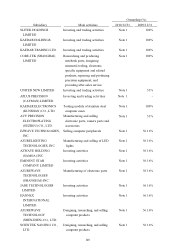Asus 2010 Annual Report Download - page 134
Download and view the complete annual report
Please find page 134 of the 2010 Asus annual report below. You can navigate through the pages in the report by either clicking on the pages listed below, or by using the keyword search tool below to find specific information within the annual report.
130
ASUSTeK COMPUTER INC. AND SUBSIDIARIES
Notes to Consolidated Financial Statements
December 31, 2010 and 2009
(EXPRESSED IN THOUSANDS OF NEW TAIWAN DOLLARS,
EXCEPT AS OTHERWISE INDICATED)
1. HISTORY AND ORGANIZATION
1) ASUSTeK COMPUTER INC. (the Company) was established on April 2, 1990. The
Company’s common shares were listed on the Taiwan Stock Exchange (TSE). Its main
activities are to produce, design and sell notebook PCs, main boards, CD-ROMs and add-on
cards.
2) The Company resolved to spin-off its OEM businesses on January 1, 2008. Pursuant to the
Company’s resolution, the Company transferred its computer and non-computer OEM
businesses to its spun-off subsidiaries PEGATRON CORPORATION (PEGATRON) and
UNIHAN CORPORATION (UNIHAN), respectively. On June 1, 2010, however, the
Company transferred further its OEM assets and business (the Company’s long-term equity
investment in PEGATRON) to the Company’s another investee, PEGATRON
INTERNATIONAL INVESTMENT CO., LTD. (PEGATRON INVESTMENT). Pegatron
Investment then issued new shares to the Company and its shareholders as consideration.
3) The Group’s headcount aggregated 18,850 and 113,324 as of December 31, 2010 and 2009,
respectively.
2. SUMMARY OF SIGNIFICANT ACCOUNTING POLICIES
The financial statements are prepared in accordance with “Regulations Governing the Preparation
of Financial Reports by Securities Issuers” and accounting principles generally accepted in the
Republic of China. The Group’s significant accounting policies are summarized below:
1) Basis of consolidation
(1) When the Group holds more than 50% of the voting rights of investees (including the
exercisable and convertible potential voting rights owned by the Group, except when
there is any evidence indicating that the Group has no controlling power from their
percentage of ownership) or when any one of the criteria listed below is met, the Group is
considered to have control over the investees. The Group not only accounts for such
investments under the equity method but also consolidates them into the Group’s
consolidated financial statements quarterly.
A. Has the ability to acquire more than half of the investee’s voting rights with
agreement of other investors.
B. Has the ability to control the financial, operating and human resource functions of
the investee according to regulations or agreements.
C. Has the authority to appoint more than half of the members of the board of directors
(or its equivalent) to control the board (or its equivalent).




